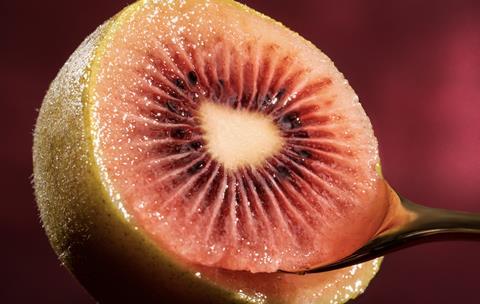Jason Te Brake says it’s an “exciting time” for RubyRed, with increased volumes “great news” for consumers

Zespri has revealed that more than 3mn trays, or 10,800 tonnes, of Zespri RubyRed kiwifruit will be available this season, and that it will be available for the first time in a number of new markets.
The RubyRed harvest will get underway in New Zealand in the coming weeks with a large increase in volume to mainland China to more than 1mn trays, or 3,500 tonnes, and a further 1mn trays to Japan.
It will also be available for the first time this season in the Philippines, Indonesia, Thailand and the Pacific Islands, Zespri confirmed.
CEO Jason Te Brake noted that it was an exciting time for Zespri RubyRed kiwifruit, with volume doubling compared with last season – which he said was ”great news” for consumers.
“With harvest set to get underway in mid-February, Zespri RubyRed kiwifruit will soon be available in most supermarkets and fruit and vegetables stores across Asia Pacific,” he outlined.
“There’ll be more RubyRed volume in our core markets of mainland China, Taiwan, Japan and South Korea and the popular fruit will also be back in New Zealand, Hong Kong, Singapore and Malaysia, as well as our exciting new markets.”
This year marks the fourth season of commercial production for RubyRed, which was developed in partnership with Plant & Food Research.
Zespri highlighted that the variety is naturally high in Vitamin C and contains anthocyanins, naturally occurring pigments within the fruit that give it its red colour.
Te Brake said RubyRed had been a ”popular addition”, with the variety complementing Zespri’s Green and SunGold kiwifruit while helping to attract new and younger consumers to the category.
“We’re seeing strong demand for Zespri RubyRed which is unique as it’s more seasonal than Green and SunGold,” he commented.
”It’s the first variety to arrive in market from New Zealand each season and only available for up to eight weeks once it hits supermarket and fruit and vegetable store shelves.
“It’s fantastic to see volumes ramping up and we continue to build our knowledge on the variety,” Te Brake added. ”The increasing volumes also give us the opportunity to grow demand further and maximise the value we can return for our growers.”



